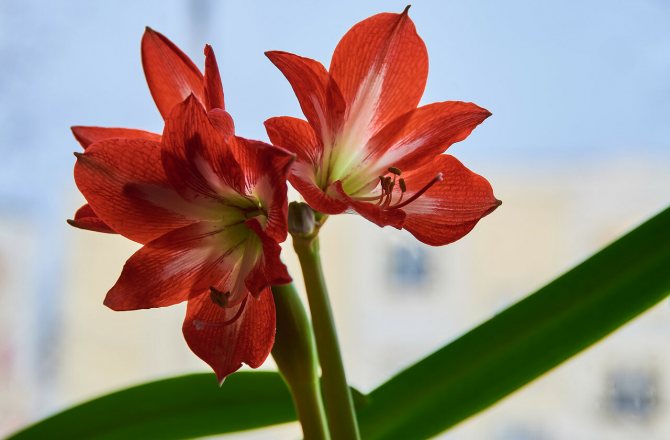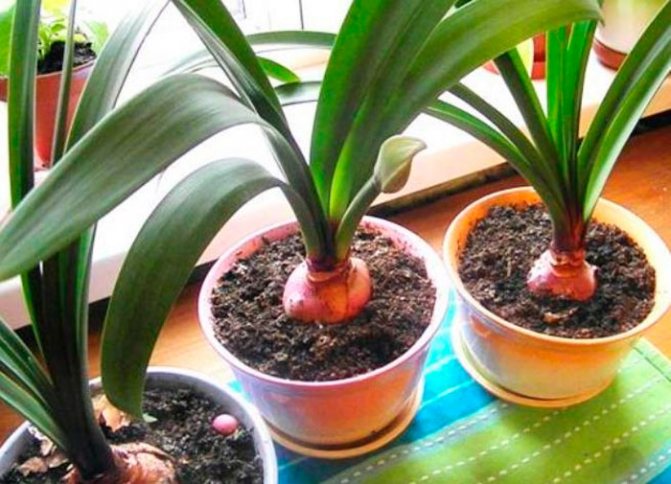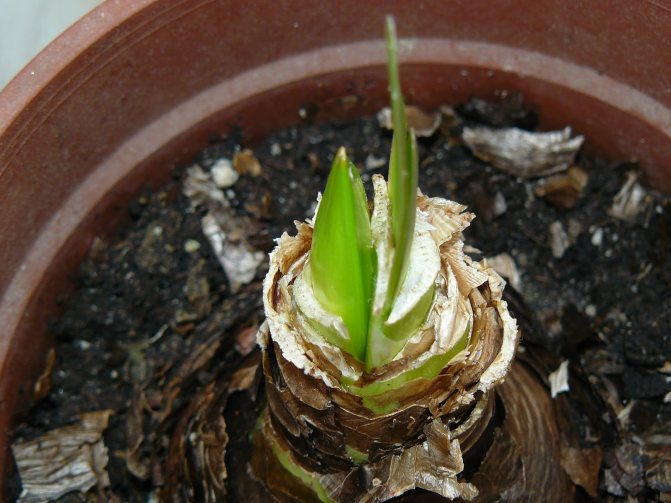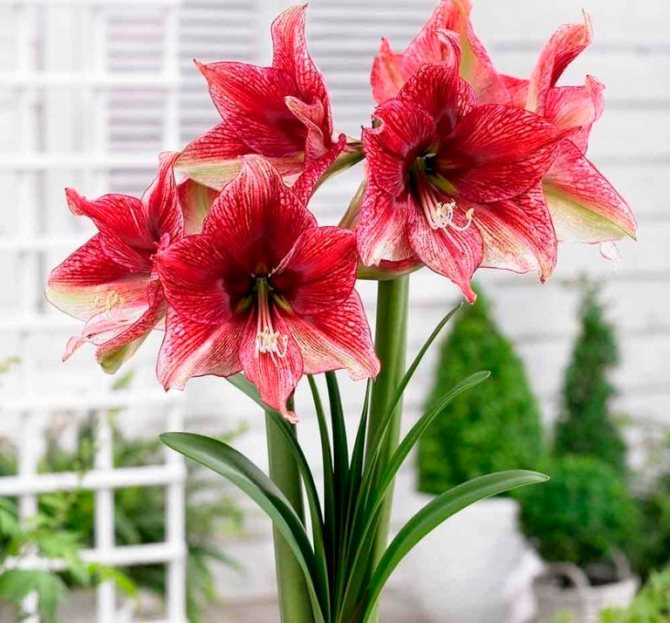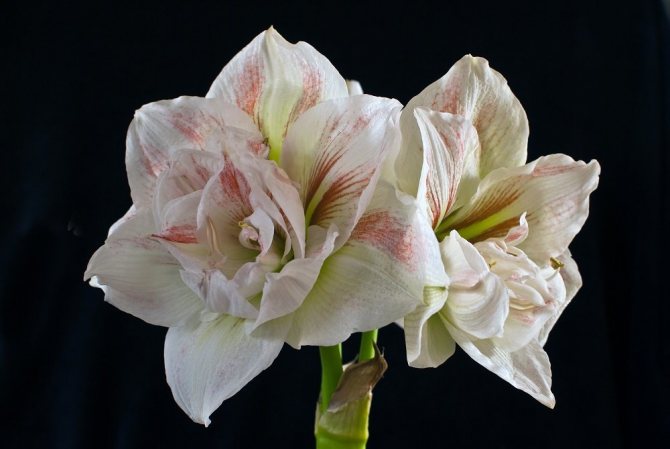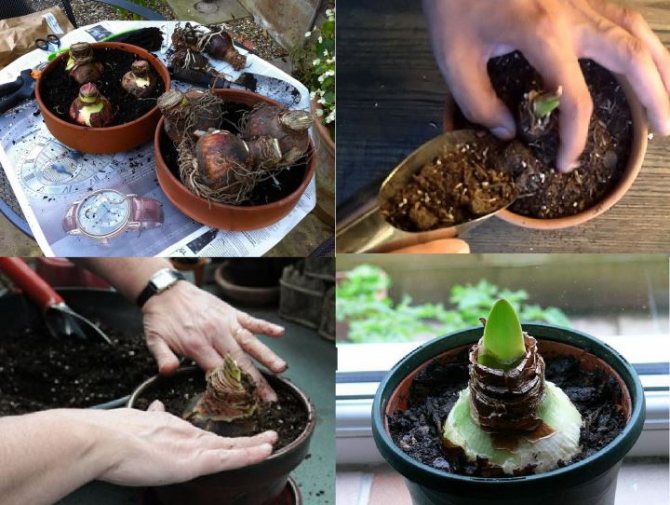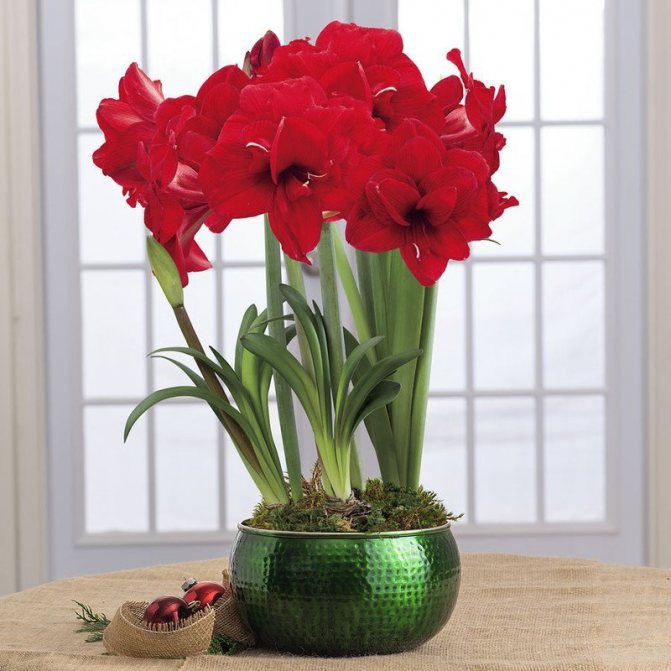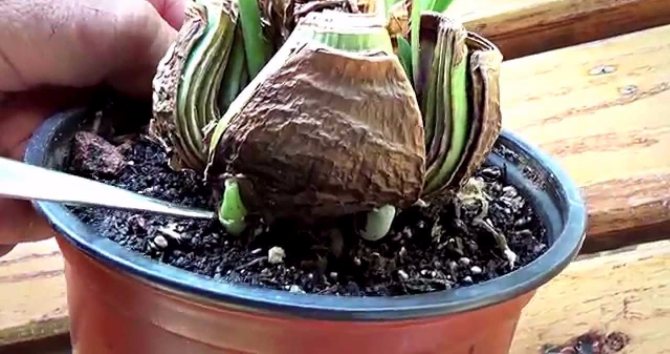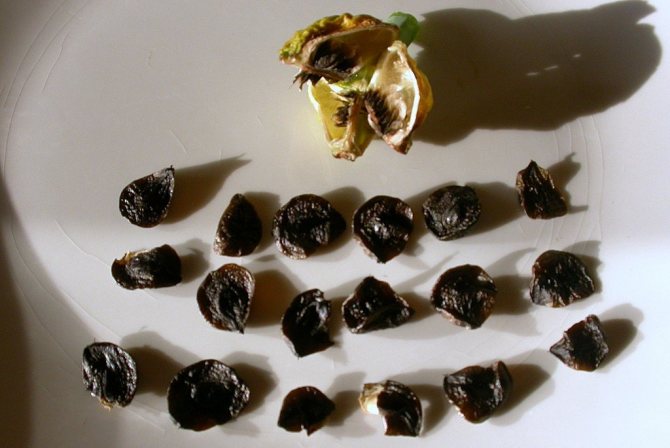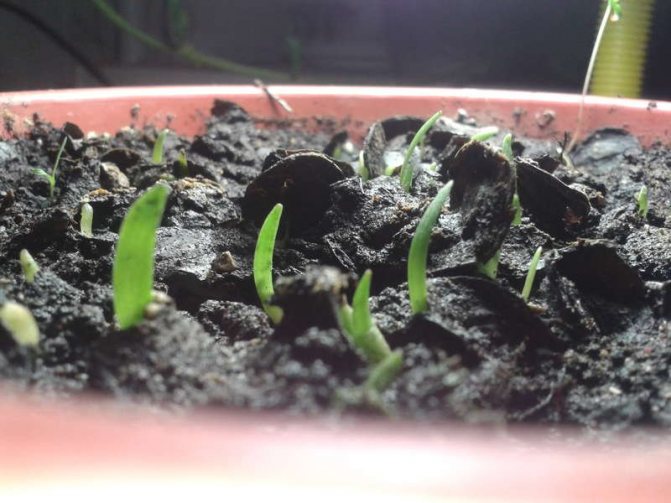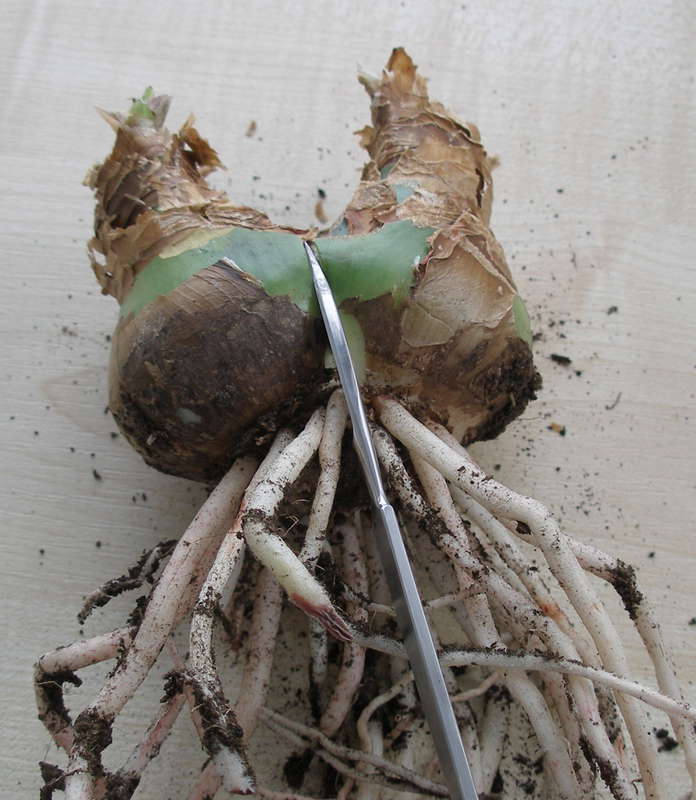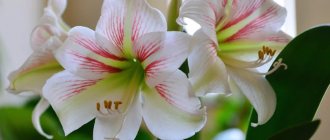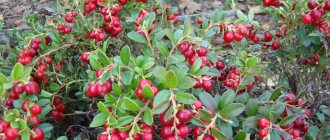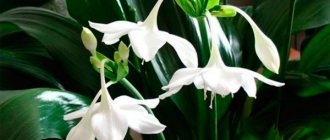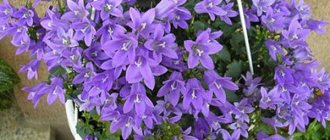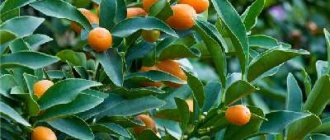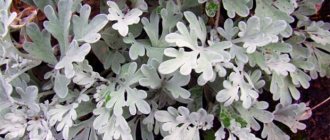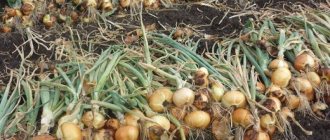Proper home care for hippeastrum will allow you to admire the most beautiful flowers that resemble stars every year. Plant lovers are often very frustrated by the lack of a flower arrow in the new season, and this is usually due to errors in the cultivation, which are easy to prevent.
The species is very similar to amaryllis, but differs from it by flowering in winter or spring (if the rhythm is not artificially knocked down), and not in autumn; hollow peduncle and lack of pear-shapedness in the bulb. What is the difference between hippeastrum and amaryllis is especially clearly seen in photographs.

How to ensure flowering?
In order for the plant to lay new flower buds after flowering, which will develop next year, it needs to organize the correct dormancy period.
Having not received proper rest, the flower will not form buds in the future. Knowing how to care for the hippeastrum so that it blooms again, the owner will not face the problem of the lack of an arrow.
The plant should be sent to rest when its leaves turn yellow. This usually occurs 2-4 months after the end of flowering.
The bulb is left in the ground or dug up and placed in a paper bag. The second option is usually applied to hippeastrum, which is planted in the garden, knocking it down the natural cycle and making it bloom in the summer, and the first to the apartment.
In summer, it is useful for a home flower to arrange a rest in the garden. The bulb is planted in the ground and left until the beginning of autumn. With the onset of September, the plant is dug up and transplanted into a pot.
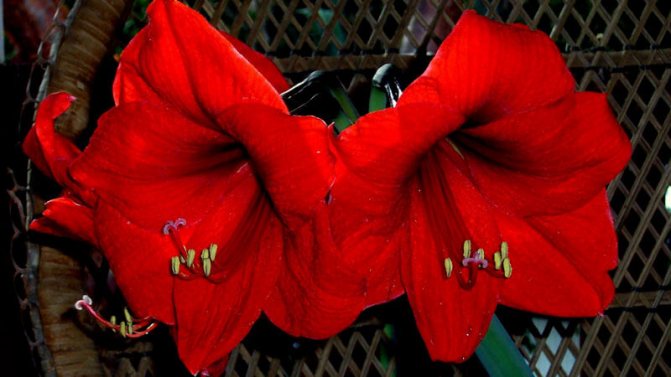

In order not to disturb the natural rhythm, it is recommended to put the bulb in a cool place until January.
For a home plant that is not planted in the garden, a rest period is organized after the leaves have completely dried out (they disappear on their own, cutting is not required).
The flower arrow, on which the seeds ripened, is cut off just before the hippeastrum is removed to rest. The storage room must be dry and dark, with a temperature not exceeding +12 ° C.
The pot is laid on its side. Watering is usually not required. The exceptions are cases when, due to excessively low air humidity, the soil dries out very much, and then it is slightly moistened once a month.
If the cycle is not knocked down, the rest period lasts from early September to January.


Blooming tricks
Uncommon, but the species may not bloom even with proper care. In such a situation, the plant must be stimulated.
These measures should not be applied regularly as they are stressful for the flower. They are contacted when one flowering season is missed.
Tips on how to make hippeastrum bloom are listed below.
1. Heat treatment. After a period of rest, the bulbs are removed from the soil and immersed in water at a temperature of 43-45 ° C for 3 hours.
This impact is perceived as a serious danger, and the plant blooms after 3-4 weeks, trying to prolong the genus.
2. Complete stop of watering and lengthening of the dormant period. The flower is harvested for rest, as it should be, from the beginning of September, but at the same time they do not water even the very dry ground.
They take out a pot with an onion, put it in the light and start watering a month later.
Flowering begins in the period 4-6 weeks from the moment of awakening and is quite lush.
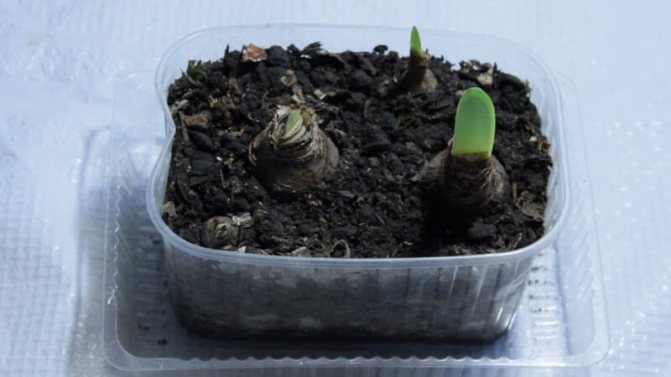

3. Top dressing. When hippeastrum does not bloom for a long time, a method is used in which in July the entire aerial part of the plant is cut off and then, after waiting 30 days without watering, it is abundantly fed with liquid complex fertilizer.
In order not to burn the bulb, you should first wet the soil in the pot and only then add the preparation.
The method is the most aggressive for the flower, and is chosen only when there is a very long absence of flowering. The rhythm of the plant will be knocked down and the buds will appear in late August or September.
Stimulation of the hippeastrum is usually required if mistakes were made in the care or the bulb is severely depleted due to age, illness or excessive previous flowering, which acted on it as stress.
Reproduction of the hippeastrum by dividing the bulb. Video:
How to plant hippeastrum from seeds at home
Many people want to know how to plant hippeastrum not with bulbs, but with seeds, despite the fact that the second method is considered much more time consuming and difficult.
Choosing a pot for planting
A plastic pot is considered the ideal option, since:
- wooden will lead to watering problems;
- the ceramic will overheat in the sun, and the plant may steam out and rot.
The size should be optimal for the number of plants that you plan to plant.
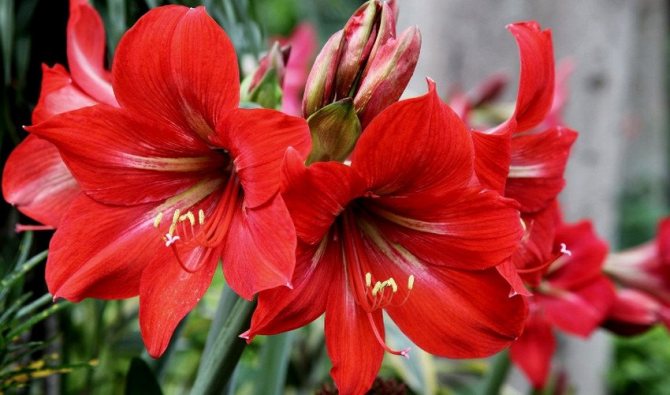

Soil treatment
Soil is fundamental to good cultivation, so care must be taken to decontaminate it in advance. Since the remains of other plants, harmful insects can be directly in the ground itself.
This can be done in several ways:
- using purchased chemicals, apply according to the instructions;
- baking the ground at high temperatures for 15 minutes on a baking sheet;
- for 3-4 days, take the earth out to the cold, more than -25 ° C;
- spraying with a solution of potassium permanganate with water.
With the help of these methods, it is possible to prevent fungal diseases, the appearance of spider mites.
Seed preparation for sowing
You also need to know how to properly prepare seeds for planting. It is necessary to process them in the same way as their land, for this they are soaked in a weak solution of potassium permanganate for 15 minutes, then they are dried, this will get rid of unwanted diseases.
The seeds themselves must be sorted out and discarded those that have spots, cracks, since they not only will not germinate, but can also be a source of fungal diseases, as well as aphids, spider mites, mealybugs.
Did you know? Hippeastrum is a very old flower, its hybrid "Hippeastrum x Johnsonii" was introduced back in 1799.
Another feature is artificial pollination, for this you need to chicken pollen from a flower into seeds. After that, a box is formed in which they ripen and feed on vitamins and minerals, after 2 months of ripening they must be removed and planted.
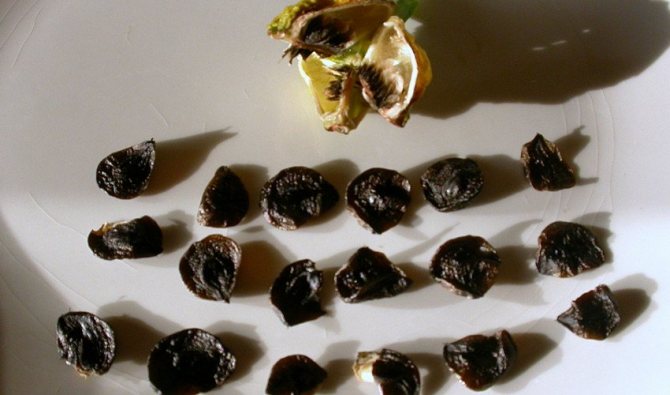

Sowing technology
On the moistened and disinfected soil, it is necessary to lay out the seeds at a distance of 2 cm without deepening, then sprinkle it with earth and use a flat object (a piece of wood, tiles) to trample the ground, then moisten it again from a spray bottle.
Hippeastrum - care for proper preparation for the rest period
When the last flower closes on the plant, it begins to prepare for the next season and rest.
Before resting, the hippeastrum must grow a green mass of at least 4 leaves.
When there are fewer of them, this means that the bulb is too depleted, so you cannot count on a peduncle next year. Hippeastrum, after flowering care at home, which was correct, will not only bloom, but also form children.
With the beginning of summer, watering is gradually reduced to start the process of wilting of the leaves.
The portions of water are not drastically reduced, as this will only damage the bulb, preventing it from accumulating a sufficient amount of nutrients. Watering completely stops by September, when the plant is harvested for rest.
It is necessary to feed the flower in the first half of the period of preparation for rest. Later fertilization can stimulate the development of new leaves, which will prevent the hippeastrum from recovering for the new season.
Secrets of caring for hippeastrum. Video:
Removal from a state of rest
For the bulbous hippeastrum, growing in a pot is not natural, which is why the plant itself is not always able to wake up in time after a dormant period.
You can wait, giving hippeastrum extra time, but this is usually extremely negative for flowering.
It is quite easy to wake up the bulb. The pot with it is placed in the light, active watering with warm water begins. Complex mineral fertilizers are also applied to stimulate growth. If the flower has not died, then it wakes up in 1-2 weeks and begins a new season of active growth.
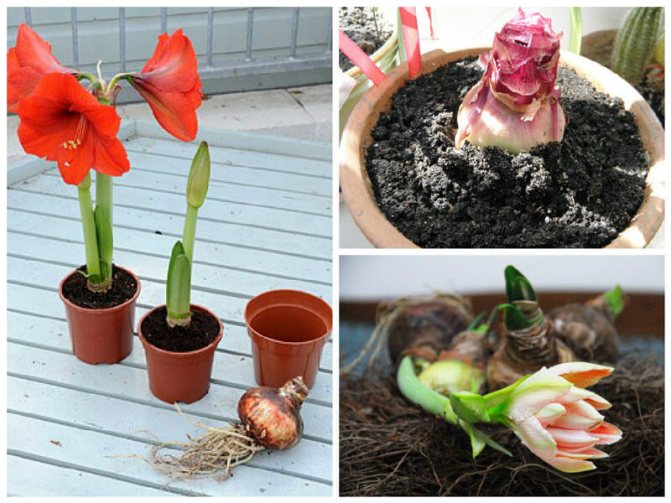

Reasons for the lack of flowers
To understand why hippeastrum does not bloom, it is necessary to analyze whether it was properly cared for. The main reasons for the unpleasant phenomenon are as follows:
- lack of nutrition - the plant is very voracious and quickly sucks out all the food from the soil in the pot. If, for some reason, fertilizers are not applied, then the bulb simply does not have the strength to form buds;
- pests - when a flower is defeated, it throws all its strength into the struggle to preserve life, and flowering will only deplete the bulb. Because of this, you should not wait for the buds before the plant is cured;
- an excess of moisture - it is unacceptable to flood the hippeastrum, as this will cause rotting of the bulb, which not only does not allow flowers to appear, but can, if detected late, lead to the death of the plant.
Older plants that end their lives may also lack the vigor to bloom in the last 1-2 seasons, which is a natural process. No stimulation is required.
General care rules
General recommendations for the care of any variety of hippeastrum will help prevent the appearance of errors that prevent you from admiring the flowers. The plant is unpretentious, but requires certain conditions for full growth.
Lighting and temperature
The bulbous needs bright lighting, but only without direct sunlight. Because of this, the plant should be placed in front of a window with thin tulle or on a windowsill, but only if a protective film is glued to the glass.
You need to choose a place for growing a flower in a room in the southwest or southeast. Turn the pot regularly so that the bush receives sufficient lighting on all sides.
The hippeastrum needs warmth during the period of active growth. The optimum temperature is from +17 to +25 ° C.
In the summer, it is useful to take the flower outside, but not in extreme heat. When landing in the ground, you need to make sure that it is warm enough and there is no stagnant water in it.


Watering
At the beginning of the development of the aboveground part of the plant, after a rest period, watering is required weak, gradually increasing as the processes in the bulb are activated and the flower arrow and leaves appear.
Putting the pot in the light, the soil in it is moistened and left until the peduncle appears. Further, until the buds open, watering is brought to abundant, but not allowing the appearance of stagnation of water in the pot.
It is ideal for a plant to moisten the soil through a tray. At the same time, the risk of flooding the bulb or drying it out is minimal.
With this method, water is poured into the pan until the earth at the top of the pot is moist.How to water the hippeastrum - in a pot or saucer - depends on personal preference.
Faded plants are gradually watered in smaller portions. Initially, the periods between humidification are increased, and then the volume of water is reduced. By the time the bulbs retire, watering is stopped completely.
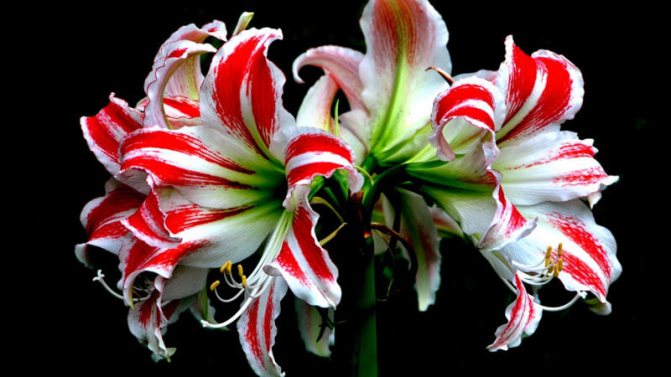

Top dressing
They begin to apply fertilizers as soon as the peduncle reaches a height of 13 cm. The first feeding is carried out with a weak solution of manganese. After 6 days, phosphate fertilizers are applied.
Further, until the end of the formation of leaves, the flower is fed every 2 weeks with a liquid composition for decorative deciduous. After the end of the development of the aboveground part, formulations for flowering plants are used with the same frequency.
Since June, feeding is carried out once a month. The last fertilization before the dormant period should be no later than 3 weeks.
Dilute the compositions strictly according to the instructions. Excessive concentration will damage the bulb and roots.
If the product is diluted too much, then the plant will receive less nutrition, which will affect its flowering in the future.
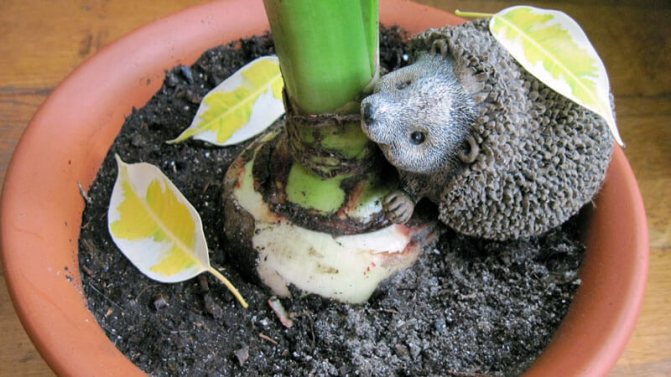

Transfer
A transplant is needed as the bulbs develop. It is usually done every 3 or 4 years. Moving to a new pot should take place just before the bulb is harvested. As a last resort, you can transplant the flower before waking up after a period of rest.
The pot must be chosen in such a size that from its wall to the bulb on either side it is 2-2.5 cm.The composition of the soil should be as follows:
- coarse sand - 2 parts;
- sod land - 2 parts;
- leaf land - 2 parts;
- humus - 1 part.
The soil must be disinfected before planting plants in it. To do this, use a solution of manganese of medium strength or hydrogen peroxide dissolved in water in a volume of 1 teaspoon per 1 glass of water.
Drainage is laid at the bottom of the pot to prevent stagnation of water, and then the soil is filled up. The bulb does not sink into the soil. It should remain 2/3 above the ground. At greater depth, the process of decay will begin.
When and under what conditions you need to plant a plant
The planting season is absolutely irrelevant, you can plant even in winter, if all the necessary conditions for growing are observed. First of all, you need to pay attention to the selected bulb, it must be: healthy, without cracks, red streaks, with good roots.
Did you know? Greek name
«
hippeastrum
»
translates as "rider's stars".
The ideal lighting option is bright sunlight or warm artificial light. Temperature - from 16 ° C. The planting site is a plastic pot with great depth but small width.
Any planting soil is suitable, but ideally it is necessary to combine: humus, peat, sand, turf. It is only necessary to deepen the bulb by half its size so that it can take root. The location for planting can be selected based on the amount of light, the ideal option is a window on the sunny side of the house.
Reproduction
You can propagate a flower by seeds, children, or by dividing the bulb. The latter method is quite difficult for a novice grower.
Division can be done only if there is complete confidence in the success of the procedure.
Planting a plant with seeds is not difficult. They are harvested after ripening and planted in the soil immediately, without allowing them to dry out. To obtain seeds, manual pollination of the hippeastrum is required. Germination of planting material is the same as for vegetable crops.
Breeding by children is the easiest. For this, during transplantation, the young bulb is separated from the parent bulb using a sharp pre-disinfected knife.
The slices are sprinkled with crushed activated carbon and the plants are planted in different pots. Young flowers are left with leaves even during the dormant period and do not stop watering them completely, only significantly reduce it during rest.


Dividing the bulb is the most risky method, which, if a mistake is made, will lead to the death of the plant. The procedure is carried out in November.
In the pot, soil is removed to the roots of the flower. The bulb is cleaned of scales without removing it from the soil. Then it is cut with a calcined knife from top to bottom into 4 equal parts, not cutting it completely, but bringing the cut only to the level of the soil.
Plastic or wooden plates are inserted into the incisions. They must prevent the parts of the bulb from joining together. The dormant period after separation ends.
Plant care after the procedure is standard. The ground must remain moist at all times. After a year, the resulting 4 bulbs are separated and planted in separate pots.
Description
In nature, the "cavalier star", as hippeastrum is translated, grows in the tropical part of the American continent. It is found on mountain slopes, plateaus of Venezuela, Mexico, Brazil. In the eighteenth century, seafarers and traders began to bring exotic plants to Europe from their trips overseas and to care for them. Botanical scientists began researching and describing unknown plants. At the same time, the construction of greenhouses began, which appeared in botanical gardens and private estates.
Hippeastrum in vivo
During this time, botanists discovered and described several types of lilies, which were called amaryllis. At the beginning of the 19th century, a new genus was distinguished - hippeastrum. It also includes some types of amaryllis. This led to what many hippeastrum were called amaryllis. This misconception still persists among amateur flower growers.
And only in 1954, at the congress of botanists around the world, it was approved that there is only one species belonging to the amaryllis family, called Amaryllis beautiful. At the same time, there are about eighty species of hippeastrum belonging to the same family.
Appearance
The home-grown hybrid hippeastrum has long, wide leaves that reach seven centimeters in width and more than half a meter in length. The plant's bulb is large, up to ten centimeters in diameter. The peduncle's spine often exceeds one meter. There are large flowers on it, the diameter of which reaches twenty centimeters. The number of flowers on a peduncle can vary from two to ten. Hippeastrum flowers are distinguished by a variety of colors and shades - from dark red to white. Colors with dots, spots of a different color are common, with a transition of shades from the funnel to the edge of the flower.
Differences between Hippeastrum and Amaryllis
People often confuse amaryllis and hippeastrum, because the plants are very similar in appearance and belong to the same family. But when they have significant differences, which are shown in the table.
| Amaryllis | Hippeastrum | |
| Homeland | South Africa | Tropics of America |
| Bulb shape | Pear-shaped, with gray scales | Round or elongated, with brownish-yellow scales |
| Number of flowers per inflorescence | 6 to 12 | From 2 to 6, less often up to 9-10 |
| Flowering time | Fall | End of winter - beginning of spring |
| Peduncle | No cavity | Hollow inside |
| Leaves | Narrow, grooved, smooth | Depending on the type, they can be smooth or rough, elongated |
Hippeastrum has become widespread as a houseplant due to its unpretentiousness. It is enough to follow the simple rules of care during the dormant and flowering period, and it will delight you with its flowers. The big advantage of hippeastrum is the possibility of forcing, which allows you to achieve flowering by a certain date.
Diseases
The hippeastrum plant belongs to the strong species that are rarely affected by diseases. Problems arise mainly if mistakes are made when caring for a flower, because of which it weakens.
1. Red burn. A fungal disease that most often appears after the bulbs are outside.
It is manifested by the formation of oblong red spots on all parts of the flower. If a disease is detected, the plant must be treated with a fungicide.
2. Downy mildew. Caused by a virus. Silvery spots of various sizes appear on the leaves, which are prone to merging with each other. Spraying with fungicide helps.
3. Red rot. It develops if the soil in the pot is constantly waterlogged. Signs of rot are visible on the bulb, the leaves hang lifelessly, there are no peduncles.
The aerial part is cut off, the onion is dug up, areas with rot are cut out of it and, after sprinkling the wounds with activated carbon, they are left to dry for a week. The plant is planted in new soil, which has been previously disinfected.
A diseased hippeastrum should not be placed next to other plants so as not to endanger them. It is unacceptable to postpone his treatment for a while after a period of rest, since the bulb itself will not recover, and the disease will increase significantly during the rest.
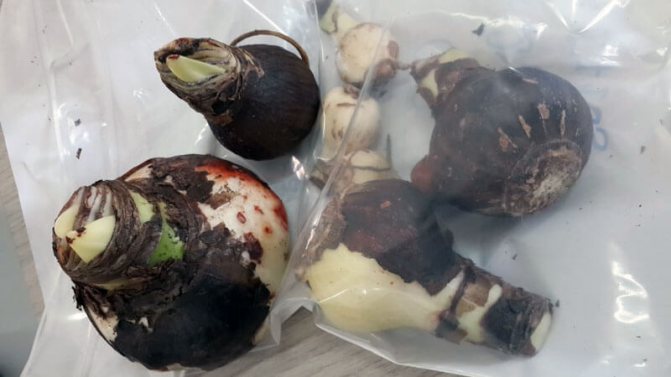

Flower varieties
There are no more than 2000 wild species of Hippeastrum together with hybrids derived from them. But only some of them are especially loved by gardeners, therefore they are bred more often than others.
Hippeastrum Leopoldii
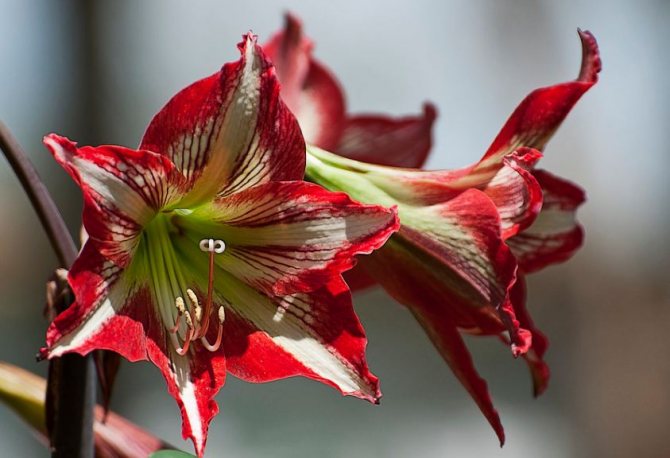

A great option for those who want to focus on this plant. The main feature of such a Hippeastrum is large double flowers on a dark green stem. Their petals are painted in two colors: white and cherry. Although hybrids with other shades have been bred.
Hippeastrum Reticulatum
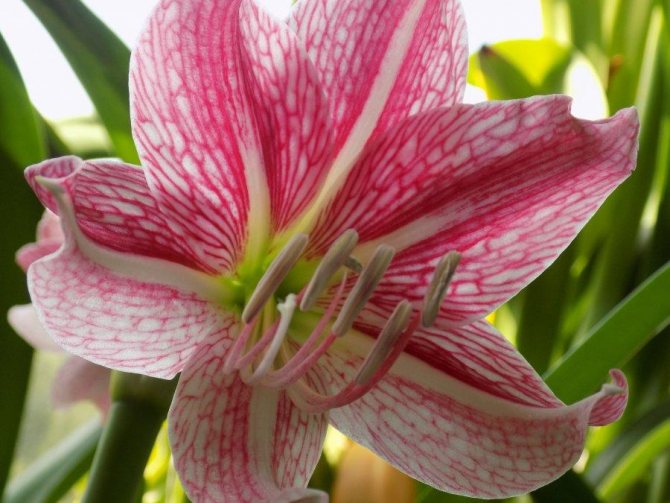

This species is rare in indoor floriculture, which is why it will almost certainly be possible to surprise with such a plant. Again, unique coloration plays a major role in the identity of the mesh Hippeastrum.
Large petals come in bright colors: pink, red, or even burgundy. But the coloring is not solid, but resembles a grid pattern. Therefore, in fact, the variety was named so.
Hippeastrum Reginae
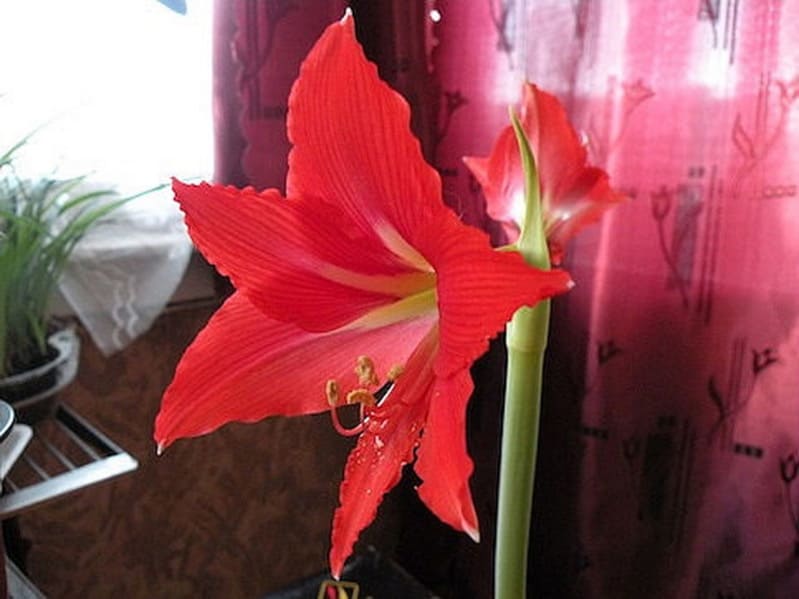

A very common species that is easy to grow, and it blooms in relatively standard conditions in most rooms. It is only important that there is warmth and enough moisture.
Flowers in this species are entirely colored in one color. More often than others, there are either red or white shades. Another name for this variety is Royal.
Amaryllis Belladonna
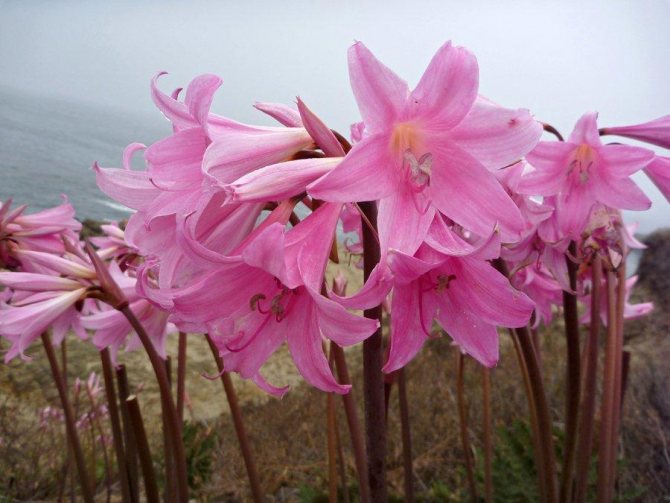

This is originally a flower from a common family with Hippeastrum, but quite different from them. On the other hand, numerous hybrids, the basis for which was just this variety of Amyryllis, are already referred to by botanists as Hippeastrum. And these species, it must be admitted, have a special flower shape, are well adapted to indoor conditions, bloom longer and are relatively undemanding to care for.



